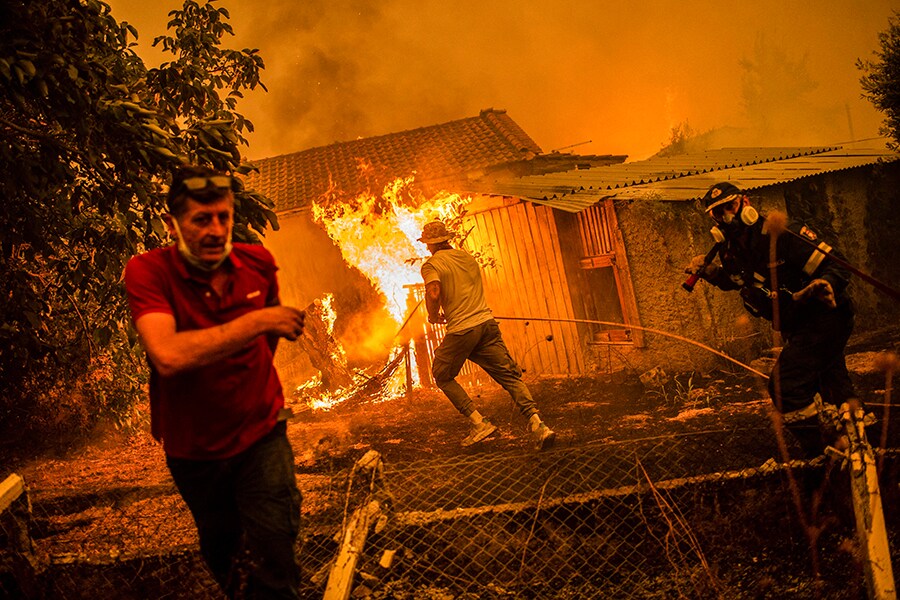
A hotter future is certain. But how hot is up to us
Nations have delayed curbing their fossil-fuel emissions for so long that they can no longer stop global warming from intensifying over the next 30 years, though there is still a short window to prevent the most harrowing future, a major new United Nations scientific report has concluded
 A firefighter and locals rush to a burning house in an attempt to extinguish forest fires that are approaching the village of Pefki on Evia (Euboea) island, Greece's second largest island, on August 8, 2021. Photo by ANGELOS TZORTZINIS/AFP via Getty Images
A firefighter and locals rush to a burning house in an attempt to extinguish forest fires that are approaching the village of Pefki on Evia (Euboea) island, Greece's second largest island, on August 8, 2021. Photo by ANGELOS TZORTZINIS/AFP via Getty Images
Nations have delayed curbing their fossil-fuel emissions for so long that they can no longer stop global warming from intensifying over the next 30 years, though there is still a short window to prevent the most harrowing future, a major new United Nations scientific report has concluded.
Humans have already heated the planet by roughly 1.1 degrees Celsius, or 2 degrees Fahrenheit, since the 19th century, largely by burning coal, oil and gas for energy. And the consequences can be felt across the globe: This summer alone, blistering heat waves have killed hundreds of people in the United States and Canada, floods have devastated Germany and China, and wildfires have raged out of control in Siberia, Turkey and Greece.
But that’s only the beginning, according to the report, issued Monday by the Intergovernmental Panel on Climate Change, a body of scientists convened by the United Nations. Even if nations started sharply cutting emissions today, total global warming is likely to rise to around 1.5 degrees Celsius within the next two decades, a hotter future that is now essentially locked in.
At 1.5 degrees of warming, scientists have found, the dangers grow considerably. Nearly 1 billion people worldwide could swelter in more frequent life-threatening heat waves. Hundreds of millions more would struggle for water because of severe droughts. Some animal and plant species alive today will be gone. Coral reefs, which sustain fisheries for large swaths of the globe, will suffer more frequent mass die-offs.
“We can expect a significant jump in extreme weather over the next 20 or 30 years,” said Piers Forster, a climate scientist at the University of Leeds and one of hundreds of international experts who helped write the report. “Things are unfortunately likely to get worse than they are today.”
©2019 New York Times News Service







